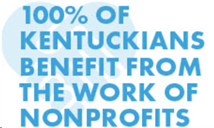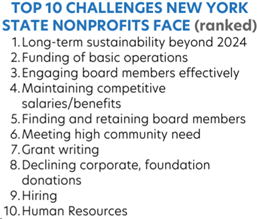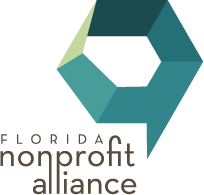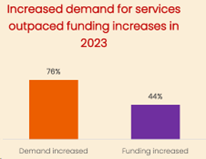Nonprofit professionals engage in advocacy every day, whether they realize it or not. Some more obvious examples include filing comments on proposed federal regulations, calling legislators on pending bills that could impact them or their communities, or attending nonprofit days at the capitol. Behind a lot of these efforts is a tool that many advocates use to their advantage: data. Frontline nonprofits can help build the advocacy data necessary to influence policy simply by completing a survey or referring to “state of the sector” or similar reports, typically compiled by state associations of nonprofits.
State of the Sector Reports
Not all reports on the nonprofit sector in specific states are entirely driven by survey results. Most state of the sector reports contain key information about the number of charitable nonprofits, the types of nonprofits, quantitative information (e.g., number of employees), and revenue ranges. Here are some recent, impressive examples.

The Kentucky Nonprofit Network’s (KNN) 2024 More than Charity report gives a closer look at the charitable nonprofits in the Commonwealth using various data sources. For instance, the data show that 1 in 10 Kentucky private sector jobs are at nonprofits, making nonprofits the 4th largest employer – a statistic that is hard to ignore. To further illustrate the importance of nonprofits to Kentucky’s economy, KNN shows that “25.2% of post-secondary graduates were employed at a nonprofit at some point within 5 years of graduation.” Sometimes data prompts the question “so what?” and there are ways to use that to your advantage. People with federal student loan debt and working full time for a nonprofit can qualify for Public Service Loan Forgiveness (PSLF), so knowing the likelihood of a recent graduate choosing a career in public service can help nonprofits use PSLF as a recruitment and retention tool (many nonprofits already are).

The 2024 State of the Sector report from the New York Council of Nonprofits (NYCON) reports that 1.3 million New Yorkers work for nonprofits. NYCON’s most recent member survey found that 62% of respondents are “concerned about funding their basic operations in 2024 (up from 50% in 2023).” Of the 65% of NYCON survey respondents that receive state funding, 90% said the funding “doesn’t cover the cost of delivering the service or program expected by the state.” If legislators introduce bills to either advance or hinder grant and contracting reform, nonprofits can point to the latest data to show the scope of the problem and to offer support for proposed solutions.
Annual Surveys and Action Alerts
Many state associations of nonprofits release annual survey reports, making it easier to gage patterns and know whether outliers can become trends over time.

The Florida Nonprofit Alliance has conducted surveys on the state’s nonprofit sector since April 2020, adjusting survey questions over time to give an “overview of the sector’s strengths and real time look at the challenges it is facing.” By knowing the current positives, pressure points, and opportunities, nonprofits can see where they fall in the data and which action items or recommendations are more feasible to pursue. The most recent survey report (issued Feb. 2024) finds that costs and demand for services are increasing, and CEO transitions are “happening frequently and will continue to do so.” For funders and government officials, the data show how they can partner with nonprofits in their communities, and readers in other states can also see how they compare to the trends in Florida.

Earlier this month, the New Jersey Center for Nonprofits released its 2024 Trends and Outlook report capturing the latest information on the themes and challenges of New Jersey’s nonprofits. Like Florida, nonprofits in New Jersey are seeing increases in demand for services. When it comes to its workforce, “half of survey respondents reported staff shortages, with an average vacancy rate of 20%.” There were other findings on the most important issues in “maintaining and improving the nonprofit sector in the next decade” that can inform nonprofits on their strategic plans and policy priorities, as well as be used to inform local, state, and federal policymakers.

Sometimes having current data or testimonials will be presented more convincingly in formats other than full state of the sector reports to alert audiences on the challenges that nonprofits face. The Delaware Alliance for Nonprofit Advancement (DANA) sent out an action alert to its members asking them to participate in a Nonprofit State Contractor Survey. The results are not intended for a formal report or study, but rather in response to state legislators’ requests for “hard numbers” and skepticism regarding the severity of state contracting challenges before lawmakers would consider supporting grants and contracting reform legislation. Receiving quick responses from nonprofits during fast-moving legislative sessions can provide nonprofit advocates timely information to support nonprofits’ arguments for policy changes, showing the statistics and providing complementary testimonials needed to gain support for legislation, and be as effective as a sign-on letter.
Next time you wonder if time spent filling out another survey is worth it, consider the impact your information can have in informing and influencing people. Completing a survey means that your story gets told, sheds light on challenges, helps develop solutions, and can even determine whether legislation or regulations get drafted in ways that are most beneficial to your mission.
